Roofing Companies Slinger
Find top Roofing Services in Slinger
Receive multiple Roofing Service quotes for your project today! Compare profiles, reviews, accreditations, portfolio, etc... and choose the best deal.
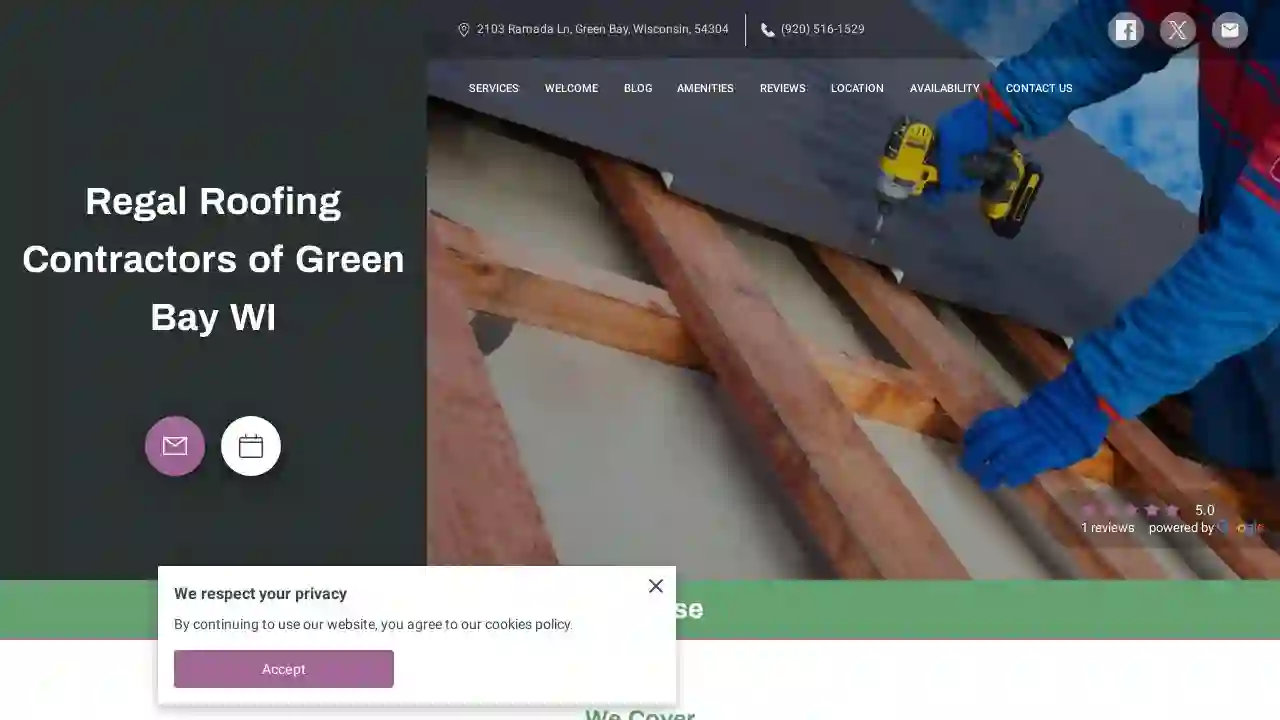
Regal Roofing Contractors of Green Bay WI
51 reviews2103 Ramada Ln, Green Bay, 54304, USAt Regal Roofing Contractors of Green Bay WI, you'll find a family run and owned business in Green Bay with years of experience. Rest assured, we are the roofers – all the work is carried out by us, not sub-contractors, so you know the quality is going to be top-notch. We cover a wide range of services including roof inspection, roof repair, siding, and ice and snow removal. Our team of fully trained and experienced roofers are able to quickly and easily fix all manner of problems and get you water-tight again in no time. Whether it's a cracked ceiling, storm damage, or just a routine maintenance check, we've got you covered. With extensive industry knowledge and know-how, you are in the best scenario working with us. We pride ourselves on our excellent planning and execution, and our customers always compliment us on the quality of our work. Don't fuss, call us today to schedule your appointment and let us take care of your roofing needs.
- Services
- Why Us?
- Testimonials
Get Quote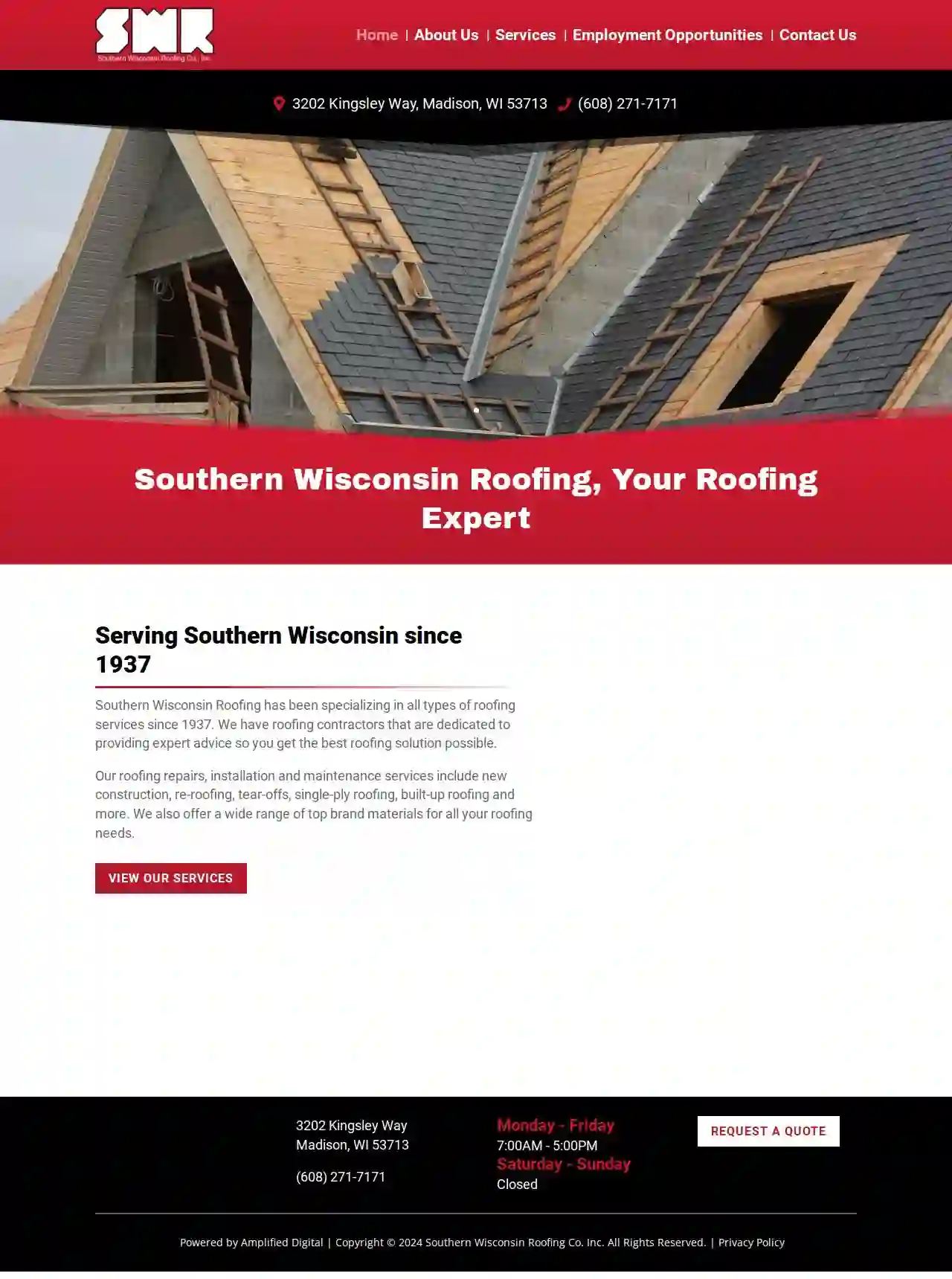
Southern Wi Roofing Co Inc
55 reviews3202 Kingsley Way, Madison, 53713, USSouthern Wisconsin Roofing has been specializing in all types of roofing services since 1937. We have roofing contractors that are dedicated to providing expert advice so you get the best roofing solution possible. Our roofing repairs, installation and maintenance services include new construction, re-roofing, tear-offs, single-ply roofing, built-up roofing and more. We also offer a wide range. of top brand materials for all your roofing needs. Southern Wisconsin Roofing is licensed, fully insured and bonded by the state. Every case given to us receives specialized complimentary consultations from our trained roofing contractors.
- Services
- Why Us?
- Gallery
Get Quote
WeatherPro Exteriors
4.8272 reviews12200 West Adler Lane, West Allis, 53214, USWorld-Class Exterior Renovations in Wisconsin. On every job, our standards are as high as they'd be for our own home. We'll make sure you never have to worry about your roofing, siding, windows or exterior doors again.
- Services
- Why Us?
- Testimonials
- Gallery
Get Quote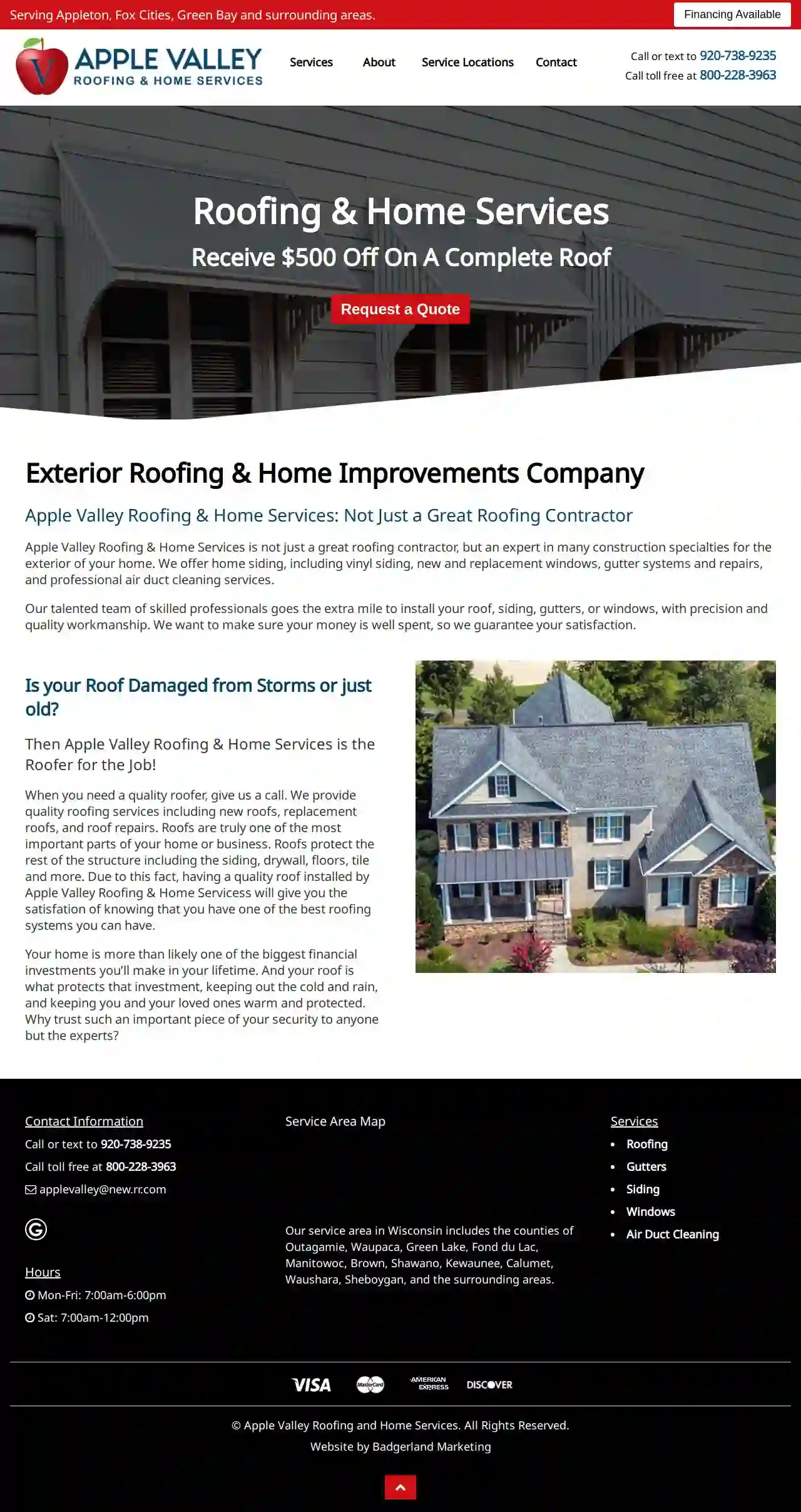
Apple Valley Roofing
410 reviews123 Main Street, Appleton, WI, 54911, USApple Valley Roofing & Home Services is a locally owned and operated company located in Appleton, Wisconsin, serving the surrounding areas. With over 25 years of experience, we are a fully licensed, bonded, and insured company committed to excellence and customer care. We guarantee satisfaction and use the best brands and manufacturers to ensure our clients receive the highest quality products and services. Our team of experts is equipped to handle any size job and service all types of roofs year-round. As a local company, we pride ourselves on providing personalized service to every customer in our community. Our reputation is built on 20 years of experience, exceptional customer service, and our team's expertise in working quickly and efficiently. Choose Apple Valley Roofing & Home Services to protect your home from the elements.
- Services
- Why Us?
- Accreditations
- Our Team
- Testimonials
- Gallery
Get Quote
A Custom To, LLC
4.9105 reviews1640 S 83rd St, West Allis, 53214, USProviding Excellent Exterior Services Since 1999 Call Now for a Free Estimate With over 50 years of combined experience, we are true professionals at A Custom To that are proud of the work we do. Our exterior home improvement company specializes in roofing and siding in West Allis, WI, and the entire Milwaukee area. We take pride in being affordable and reliable. In fact, we have earned the reputation of being the best home repair contractor in the business. Our badges of honor include a nearly twenty-year-long A+ rating from the Better Business Bureau and a 10 year super service award with Angi. We provide further exterior home improvement solutions including: Downspout and Gutter Repair and Installation Attic Insulation Chimney Repair General Home Repair
- Services
- Why Us?
- Accreditations
- Gallery
Get Quote
Milwaukee Roofer
Suite 100, 11111 Katy Freeway, Houston, 77084, USExpert Roof Pros is a locally owned and operated roofing company serving the greater Houston area. We are dedicated to providing high-quality roofing services at competitive prices. Our team of experienced roofers is committed to delivering exceptional customer service and workmanship. We offer a wide range of roofing services, including roof repair, roof replacement, and new roof construction. We also specialize in storm damage repair. We are fully licensed and insured, and we stand behind our work with a 100% satisfaction guarantee. At Expert Roof Pros, we understand that your roof is one of the most important investments you can make in your home. That's why we use only the highest quality materials and workmanship. We are committed to providing our customers with the best possible roofing experience. Contact us today for a free estimate!
- Services
- Why Us?
Get Quote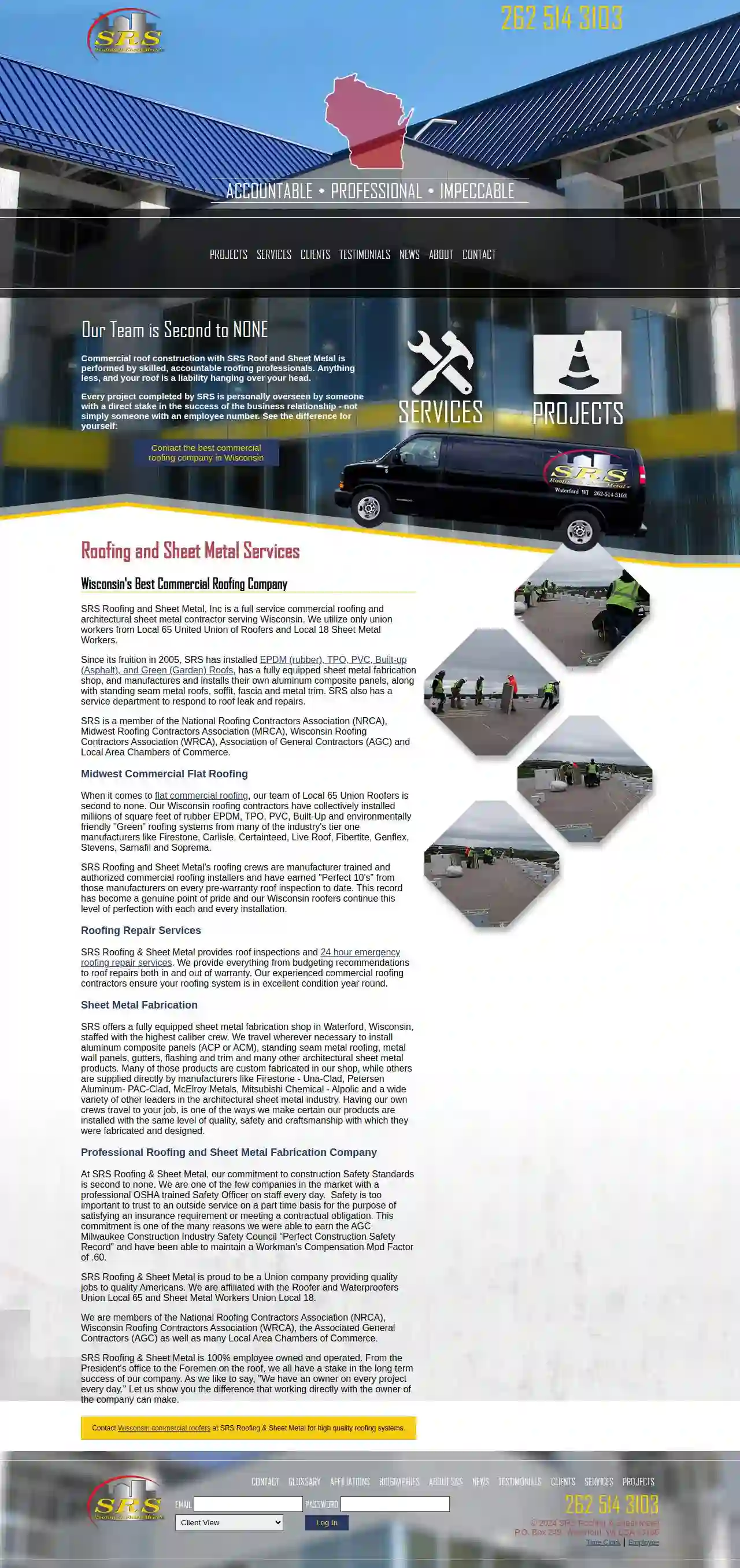
SRS Roofing & Sheet Metal
4.54 reviewsWaterford, WI USA, P.O. Box 249, 53185, USSRS Roofing and Sheet Metal, Inc is a full service commercial roofing and architectural sheet metal contractor serving Wisconsin. We utilize only union workers from Local 65 United Union of Roofers and Local 18 Sheet Metal Workers. Since its fruition in 2005, SRS has installed EPDM (rubber), TPO, PVC, Built-up (Asphalt), and Green (Garden) Roofs, has a fully equipped sheet metal fabrication shop, and manufactures and installs their own aluminum composite panels, along with standing seam metal roofs, soffit, fascia and metal trim. SRS also has a service department to respond to roof leak and repairs. SRS is a member of the National Roofing Contractors Association (NRCA), Midwest Roofing Contractors Association (MRCA), Wisconsin Roofing Contractors Association (WRCA), Association of General Contractors (AGC) and Local Area Chambers of Commerce. Our commitment to construction Safety Standards is second to none. We are one of the few companies in the market with a professional OSHA trained Safety Officer on staff every day. Safety is too important to trust to an outside service on a part time basis for the purpose of satisfying an insurance requirement or meeting a contractual obligation. This commitment is one of the many reasons we were able to earn the AGC Milwaukee Construction Industry Safety Council "Perfect Construction Safety Record" and have been able to maintain a Workman's Compensation Mod Factor of .60. SRS Roofing & Sheet Metal is proud to be a Union company providing quality jobs to quality Americans. We are affiliated with the Roofer and Waterproofers Union Local 65 and Sheet Metal Workers Union Local 18. We are members of the National Roofing Contractors Association (NRCA), Wisconsin Roofing Contractors Association (WRCA), the Associated General Contractors (AGC) as well as many Local Area Chambers of Commerce. SRS Roofing & Sheet Metal is 100% employee owned and operated. From the President's office to the Foremen on the roof, we all have a stake in the long term success of our company. As we like to say, "We have an owner on every project every day." Let us show you the difference that working directly with the owner of the company can make.
- Services
- Why Us?
- Accreditations
- Gallery
Get Quote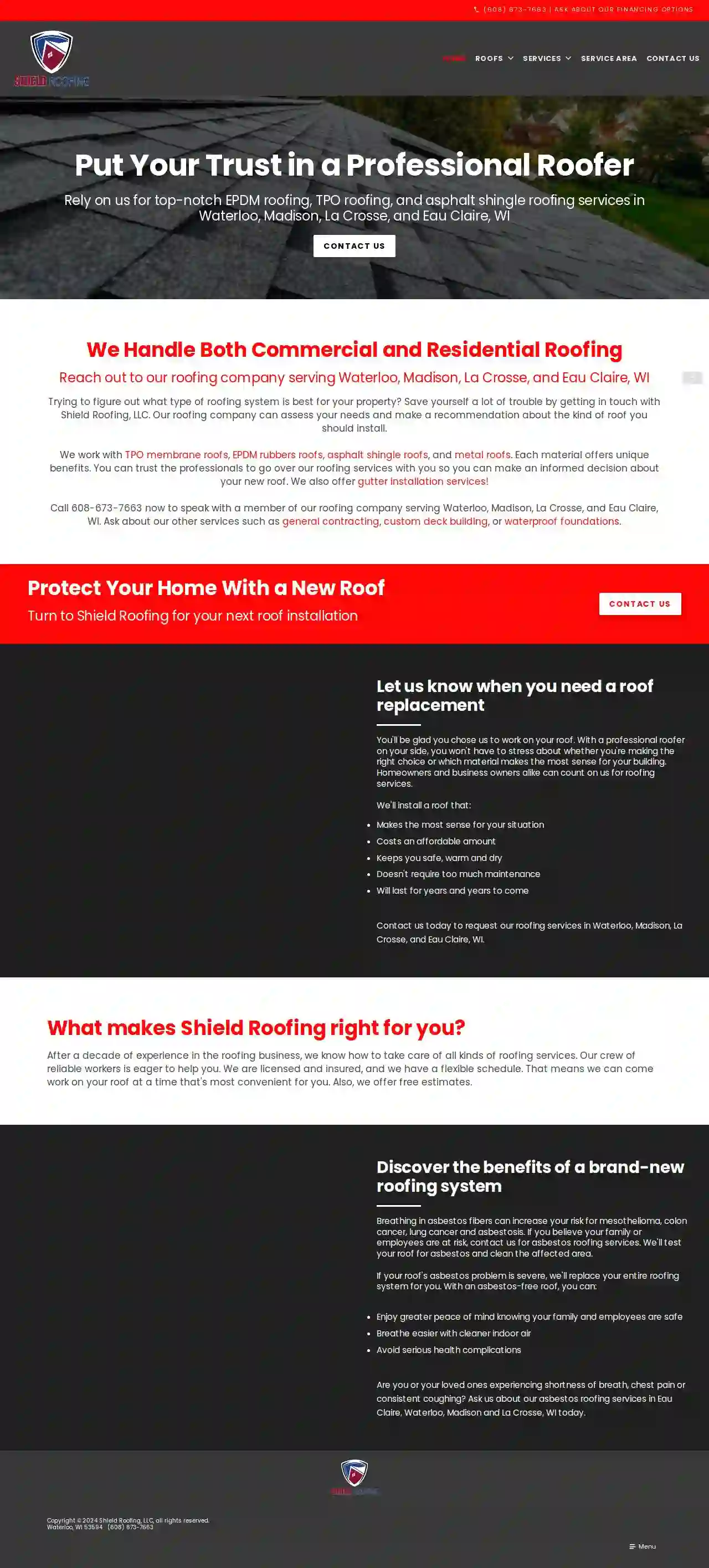
Wisconsin Shield Roofing
59 reviewsWaterloo, WI, 53594, USPut Your Trust in a Professional Roofer Rely on us for top-notch EPDM roofing, TPO roofing, and asphalt shingle roofing services in Waterloo, Madison, La Crosse, and Eau Claire, WI. We Handle Both Commercial and Residential Roofing Reach out to our roofing company serving Waterloo, Madison, La Crosse, and Eau Claire, WI. Trying to figure out what type of roofing system is best for your property? Save yourself a lot of trouble by getting in touch with Shield Roofing, LLC. Our roofing company can assess your needs and make a recommendation about the kind of roof you should install. We work with TPO membrane roofs, EPDM rubbers roofs, asphalt shingle roofs, and metal roofs. Each material offers unique benefits. You can trust the professionals to go over our roofing services with you so you can make an informed decision about your new roof. We also offer gutter installation services! Call 608-673-7663 now to speak with a member of our roofing company serving Waterloo, Madison, La Crosse, and Eau Claire, WI. Ask about our other services such as general contracting, custom deck building, or waterproof foundations.
- Services
- Why Us?
- Our Team
- Gallery
Get Quote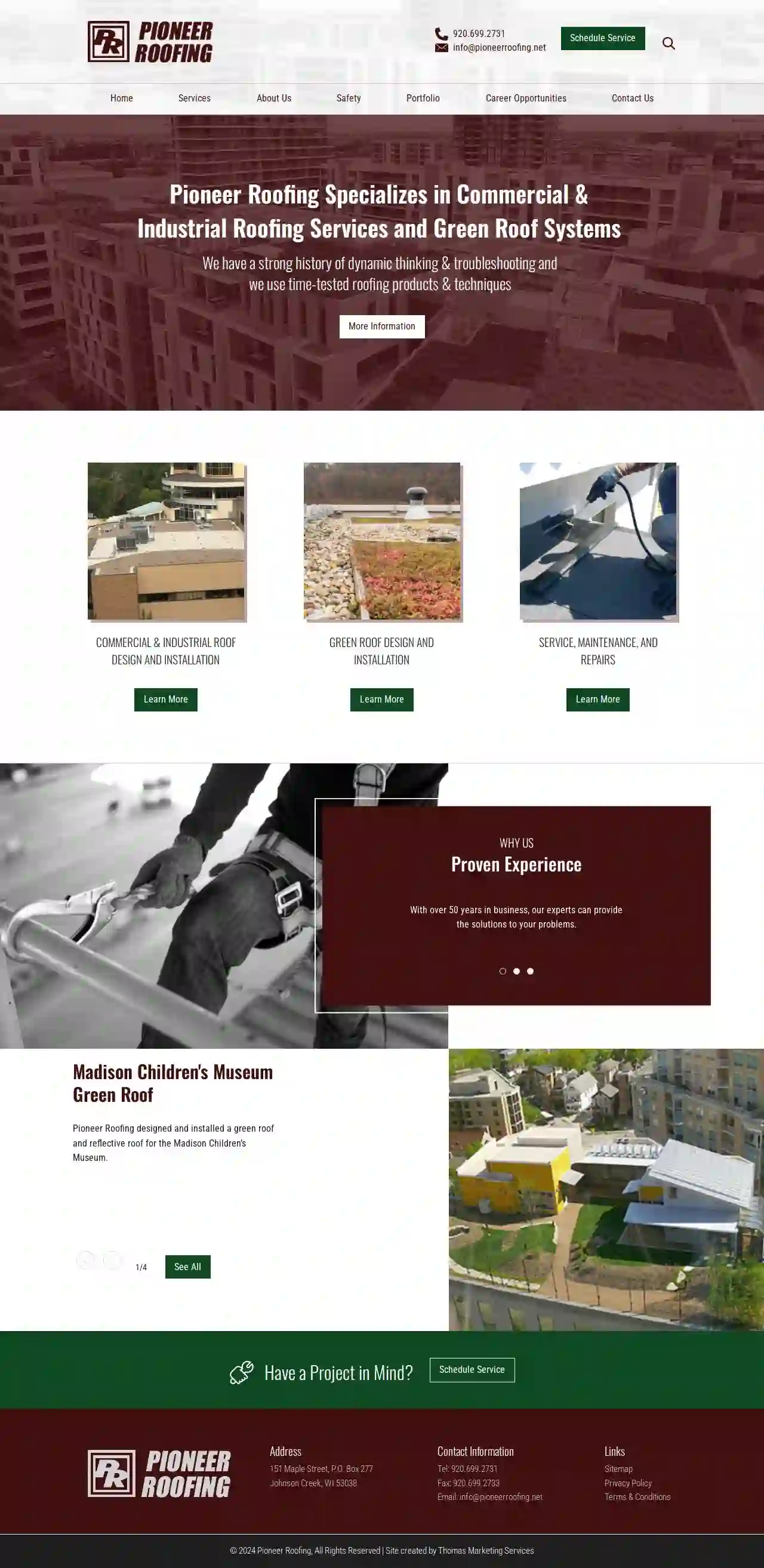
Pioneer Roofing LLC
4.312 reviews151 Maple Street, P.O. Box 277, Johnson Creek, 53038, USPioneer Roofing Specializes in Commercial & Industrial Roofing Services and Green Roof Systems We have a strong history of dynamic thinking & troubleshooting and we use time-tested roofing products & techniques Established in 1966 in Jefferson County in south-central Wisconsin, Pioneer Roofing has experienced a great transformation in our business profile over our 50 plus years in business. Pioneer Roofing has grown from its rural upbringings into a regional contractor by being conscious of the ever-changing construction market. We offer our clients an unlimited array of roofing, waterproofing and sheet metal solutions. Over our years in business, Pioneer Roofing has become one of the most recognized roofing contractors in the State of Wisconsin. Our exceptional customer service and impeccable safety record provide our clients a comfort level not often found in the roofing industry. At Pioneer Roofing we pride ourselves on customer satisfaction and the professionalism to fulfill your roofing needs. Pioneer Roofing has a strong history of dynamic thinking and troubleshooting. We use time-tested roofing products and techniques that have proven themselves in the marketplace. As a team, it is our goal to meet and exceed our clients’ expectations. To all of our current clients, thank you for your business. If you have yet to work with us, we look forward to the opportunity of showing you the distinction that Pioneer Roofing offers to our clientele.
- Services
- Why Us?
- Accreditations
- Gallery
Get Quote
Roofed Right America LLC
4.9102 reviews64 Fenner Avenue, Clifton, 07013, USRoofed Right America serves businesses in Milwaukee County, all of Southeastern Wisconsin, and beyond. Unlike other roofing contractors in the area, we specialize in commercial roof repair, commercial roof replacement, and maintenance for commercial properties only. Our 13+ years of specialized roofing experience gives us the confidence to offer a workmanship warranty covering our service quality and roofing prices no other commercial roofer in Milwaukee is willing to offer. We are a commercial roofing company in Milwaukee specializing in flat commercial roof repair, replacement and maintenance. All of our contractors are certified and our workmanship is warrantied, ensuring your roof gets done right and at budget.
- Services
- Why Us?
- Testimonials
- Gallery
Get Quote
Over 17,196+ Roofers registered
Our roofing contractors operate in Slinger & beyond!
Roofyng.com has curated and vetted the Best Roofers near Slinger. Find a reliable pro today.
Frequently Asked Questions About Roofing Companies
- Experience: Companies with a solid track record and years of experience in the industry.
- Licensing and Insurance: Verify they are properly licensed to operate in your area and carry adequate insurance to protect you from liability.
- Certifications: Look for certifications from reputable organizations, demonstrating expertise in specific roofing materials or techniques.
- Positive Reviews: Check online reviews and testimonials from previous customers.
- Professionalism: Choose a company that communicates clearly, provides detailed estimates, and has a courteous and responsive team.
- Regular Inspections: Inspect your roof at least twice a year for signs of damage or wear and tear.
- Gutter Cleaning: Clean gutters and downspouts regularly to prevent clogs and ensure proper drainage.
- Tree Trimming: Trim overhanging branches to avoid damage from falling debris and reduce shade, preventing moss growth.
- Proper Ventilation: Ensure good attic ventilation to regulate temperature and moisture.
- Timely Repairs: Address any damage promptly to prevent escalation.
How do I find a good roofing company?
How do I prevent roof damage?
What is the difference between a roofer and a general contractor?
Roofer: Specializes in roof installations, repairs, and replacements. They have expertise in roofing materials, techniques, and safety practices specific to roofing.
General Contractor: Oversees and manages entire construction projects, including hiring and coordinating subcontractors, such as roofers, electricians, plumbers, etc. They handle overall project planning, scheduling, and budgeting.
For roofing projects, it's generally best to hire a roofing contractor who specializes in roof work.
How often should I clean my gutters?
How do I find a good roofing company?
- Experience: Companies with a solid track record and years of experience in the industry.
- Licensing and Insurance: Verify they are properly licensed to operate in your area and carry adequate insurance to protect you from liability.
- Certifications: Look for certifications from reputable organizations, demonstrating expertise in specific roofing materials or techniques.
- Positive Reviews: Check online reviews and testimonials from previous customers.
- Professionalism: Choose a company that communicates clearly, provides detailed estimates, and has a courteous and responsive team.
How do I prevent roof damage?
- Regular Inspections: Inspect your roof at least twice a year for signs of damage or wear and tear.
- Gutter Cleaning: Clean gutters and downspouts regularly to prevent clogs and ensure proper drainage.
- Tree Trimming: Trim overhanging branches to avoid damage from falling debris and reduce shade, preventing moss growth.
- Proper Ventilation: Ensure good attic ventilation to regulate temperature and moisture.
- Timely Repairs: Address any damage promptly to prevent escalation.
What is the difference between a roofer and a general contractor?
Roofer: Specializes in roof installations, repairs, and replacements. They have expertise in roofing materials, techniques, and safety practices specific to roofing.
General Contractor: Oversees and manages entire construction projects, including hiring and coordinating subcontractors, such as roofers, electricians, plumbers, etc. They handle overall project planning, scheduling, and budgeting.
For roofing projects, it's generally best to hire a roofing contractor who specializes in roof work.